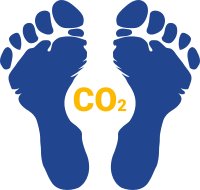Latest News
Going the extra (leafy) mile: We’re planting 2 trees for every new virtual server | Storm Internet

We’re proud to announce 22 Trees – a running initiative where we’ve partnered up with more:trees to plant two trees every year for every virtual server created on our public cloud. This will help us offset the carbon emissions of physical servers that host customer virtual servers – and a little extra.
Storm’s two trees per virtual server now comes as standard with every new virtual server created on our network, at no extra cost to our customers. Plus, customers will get a personalised more:trees certificate delivered straight to their inbox – perfect for sharing on social media (or any other channel) to inspire other businesses to adopt a greener way of doing things.
Why ‘22’?
In theory, we can safely host up to 11 virtual servers on one super-efficient Dell PowerEdge server. That’s ample processing power for every virtual server with a little room to spare. Eleven virtual servers, two trees per virtual server… 22 Trees.
Does this mean Storm servers are powered by non-renewables?
No. More than 90% of Storm’s servers are already powered by renewable energy sources, which makes the actual number of trees required to offset server emissions much, much lower. But, we’re passionate about the environment, and this gives us a chance to go that extra mile on behalf of our customers.
For dedicated and private cloud servers we’ll calculate the emissions based on the specifications of the physical server, plug those specifications into our formula, and plant the number of trees needed to offset emissions.
Emissions associated with virtual servers created before the launch of our 22 Trees campaign are already covered by our previous offset initiatives.

Calculating server emissions
Technically two trees more than cover one virtual server’s share of physical server emissions. Doing the math, it’s about 0.77 to 1.12 trees per virtual server, or 8.5 to 12.3 trees per physical server to offset the physical server’s annual carbon emissions (if those servers weren’t powered with renewable sources).
But 22 sounds better, and allows us to plant two trees per virtual server created on a physical server, instead of one-and-a-fraction trees.
Calculating the number of trees required to offset the carbon emissions of a server, or any other appliance for that matter, is easy. Here are the steps we took to make our calculations:

Step 1: Calculate carbon emissions
To calculate carbon emissions manually we need:
- Power consumption in kWh
- Per scope item conversion factor
Calculating power consumption (kWh)
Calculating the actual power consumption of a server is complex, given that the server’s load, internal components (e.g. processor, SSD/HDD, etc.), and external factors (e.g. ambient temperature / cooling) all play a part in the power consumed by the server. As such, to keep things simple, our calculations are skewed toward a theoretical upper limit which we’ll assume to be sustained all year round.
We started by calculating a server’s wattage with this formula:
Wattage = Voltage × Amperage
Or, with our figures plugged in:
Wattage = 240V × 0.6A = 144W
Next, we need to convert 144 Watts to kilowatt-hour, which is a kilowatt of power sustained for one hour:
kWh = Watts ÷ 1000 = 0.144kWh
Armed with the total energy consumption per Storm physical server per hour (0.144kWh), we can calculate the monthly or annual power consumption by multiplying the figure above with the number of hours in a month, or a year.
- Monthly: 0.144kWh × 720 hours (in a 30-day month) = 103.68kWh / month
- Annual: 0.144kWh × 8,760 hours = 1,261.44kWh / annum
Now that we have the monthly or annual kWh of one server, we’ll need an emission factor to calculate the emissions of the server. Emission factors are classified according to scope.
What are scopes?
A scope is an “emission source”. Here’s a quick rundown of the three main scopes as per the UK Government’s Greenhouse Gas Reporting Conversion Factors 2021:
Scope 1 – Direct Emissions
These are emissions from energy sources created by the individual or organisation. Examples include:
“boilers, furnaces and vehicles; and emissions from chemical production in owned or controlled process equipment.”
Scope 2 – Energy Indirect
These are emissions created by another entity that result in direct energy consumption by the individual or organisation. Examples include:
“purchased electricity, heat, steam and cooling.”
Scope 3 – Other indirect
Again, emissions created by another entity, but consumed as a result of the actions of an individual or organisation. Examples include:
“business travel by means not owned or controlled by your organisation, waste disposal, materials or fuels your organisation purchases”
To find the scope-based emission factor for your calculations, download the UK Government’s Greenhouse Gas Reporting Conversion Factors 2021 (we used the ‘condensed set’). Once you’ve downloaded the spreadsheet, you’ll note that the tabs at the bottom are colour-coded to represent the three different emission scopes.
The Formula
Emissions (kgCO2e) = Total energy consumption (kWh) × Emission Factor (kgCO2e)
Emissions are measured in kgCO2e, or kilograms of carbon dioxide (CO2) equivalent. The ‘equivalent’ is used to include other harmful emissions as defined by the Kyoto Protocol: methane (CH4), nitrous oxide (N2O), hydrofluorocarbons (HFCs), perfluorocarbons (PFCs), nitrogen trifluoride (NF3) and sulphur hexafluoride (SF6).
For our calculations, we used a Scope 2 conversion factor for UK Electricity, which is 0,21233kgCO2e.
Plugging in all our data, our formula reads:
Emissions (kgCO2e) = 1,261.44kWh / annum × 0,21233kgCO2e
Emissions (kgCO2e) = 264.172kgCO2e per physical server per annum

Step 2: Convert emissions to trees
Now that we have our total emissions per server per year, we’re faced with a different problem: given that trees vary by species, shape, size, and a slew of other metrics, how can we reliably determine the number of trees needed to offset our calculated emissions?
In the absence of official guidelines, we turned to Google, asking “How many trees are needed to absorb 1 kg of CO2?”
While the results vary, they all fall within the same ballpark: One tree absorbs roughly 21 kg to 35 kg of CO2 per year.
Going by the data provided by this post from Encon, a Belgian company that helps organisations make the change to sustainability (no affiliation), we settled on their range of 21.77 kg CO2/tree to 31.5 kg CO2/tree per year.
As such, we can now divide our total emissions per server (264.172kgCO2e per annum) by the amount of CO2 absorbed per tree per year to arrive at the number of trees per server per year:
264.172kgCO2e ÷ 21.77 = 12.134 trees per server per year
and
264.172kgCO2e ÷ 31.50 = 8.386 trees per server per year
Therefore, to offset the CO2 emissions of one physical server, we’ll need to plant 8.4 to 12.1 trees per year. Or 22, to keep in line with Storm’s tradition of going the extra mile.
Notes
Since the bulk of our electricity comes from renewable sources, data centre overhead wasn’t included in these calculations. Where a data centre does not rely on power from renewable sources, the data centre’s PUE rating has to be included in the kWh calculation.
Additional Information
These are some of the sources we used for this post, or to verify our calculations. Use them for more information, or to verify your own calculations:
SME Carbon Footprint Calculator | Carbon Trust
How to calculate your business’s carbon footprint | Business Energy Scotland
Speak with a Storm Expert
Please leave us your details and we'll be in touch shortly
A Trusted Partner








